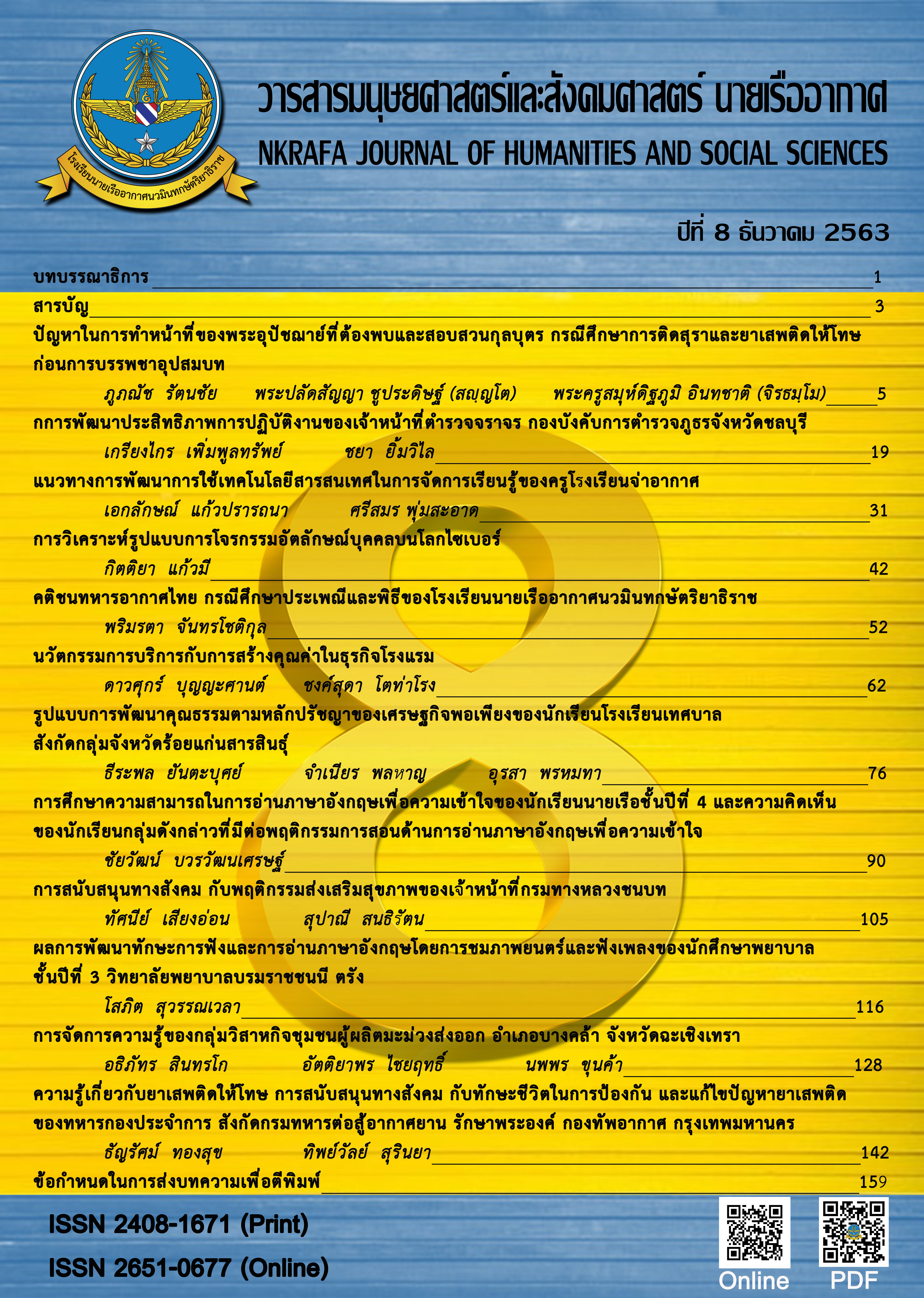An Analysis of Structural Form of Identity Theft in Cyber
Main Article Content
Abstract
The objective of this study is to present identity theft in cyber which included structural forms, types of information, and the means to solve the problems of crimes. Nowadays the world becomes a place of information technology and borderless communication as the internet is connecting the world together, information technology, therefore plays a vital role in our daily life and becomes a part of our life. The internet can facilitate and respond to human needs to exchange the information between them which makes everyone trust in the system and expose their personal information to the public. Therefore, it is a loophole for criminals to access to the sensitive and confidential personal information including bank account information, credit information and taxation. These criminals would create fake accounts for their criminal purposes, for instance, driving license, passport, and etc. under the name of victims through the use of various tactics and modern technology as part of a tool to commit in crimes. This has a huge impact on the government, private sector, and the public because identity theft can be extended to various forms of crimes as it is easily accessible in all areas. Therefore, everyone and every sector need to raise an awareness to protect both oneself and their surrounding identity to narrow the loopholes and to avoid becoming a victim of such criminals. The most important thing is everyone must be aware and value their own identity and learn how to survive on the world of internet carefully and safely to protect oneself from becoming a victim and protect others to be safe and happy on the social networks and online communities.
Article Details
บทความที่ได้รับการตีพิมพ์เป็นลิขสิทธิ์ของวารสารมนุษยศาสตร์และสังคมศาสตร์ นายเรืออากาศ
ข้อความที่ปรากฎในบทความแต่ละเรื่องในวารสารวิชาการเล่มนี้ เป็นความคิดเห็นส่วนตัวของผู้เขียนแต่ละท่าน ไม่เกี่ยวข้องกับโรงเรียนนายเรืออากาศฯ และคณาจารย์ท่านอื่น ๆในโรงเรียนนายเรืออากาศฯ แต่อย่างใด ความรับผิดชอบขององค์ประกอบทั้งหมดของบทความแต่ละเรื่องเป็นของผู้เขียนแต่ละท่าน หากมีความผิดพลาดใด ๆ ผู้เขียนแต่ละท่านจะรับผิดชอบบทความของตนเองแต่เพียงผู้เดียว
References
Mercuri, R. T., “Scoping identity theft”, Communications of the ACM, 49(5), page 17-21, 2006.
Graeme R. Newman, Megan M. McNally, Identity Theft Literature Review. Federal funds provided by the
U.S. Department of Justice, 2005-TO-008, 2005
Gregory J. Gerard, William Hillison, Carl Pacini, “Identity theft: the US legal environment and organisations’ related responsibilities”, Journal of Financial Crime, Vol. 12 Issue: 1, pp.33-43, 2004.
CIPPIC, “Working Paper No. 2: Techniques Of Identity Theft” [Internet], Ottawa, Canadian Internet Policy and Public Interest Clinic (CIPPIC), 2007.
Norum, P. S., & Weagley, R. O., “College Students, Internet Use, and Protection from Online Identity Theft”, Journal of Educational Technology Systems, 35(1), pp. 45-59, 2007.
Haygood, R., & Hensley, R., “Preventing identity theft: New legal obligations for businesses”, Employment Relations Today (Wiley), 33(3), pp. 71-83, 2006.
Cukier, W. & Levin, A., Internet fraud and cybercrime. In F. Schmalleger & M. Pittaro (Eds.), Crimes of the Internet (pp. 251-279), 2009.
William Roberds & Stacey L. Schreft, “Data Breaches and Identity Theft”, Presentations at the Federal Reserve Bank of Chicago, the 2008 Payments Workshop at the Bank of Canada, and the 2008 LAEF Conference on Payments and Networks at UC Santa Barbara., 2009.
Heith Copes, Kent R. Kerley and John Kane., “Differentiating identity theft: An exploratory study of victims using a national victimization survey”, Journal of Criminal Justice, Volume 38, Issue 5, September– October 2010, pp. 1045-1052, 2010.
Eric Holm, “Social networking and identity theft in the digital society”, The International Journal on Advances in Life Sciences, 6 (3&4), pp. 157-166: ISSN 1942-2660, 2014.


